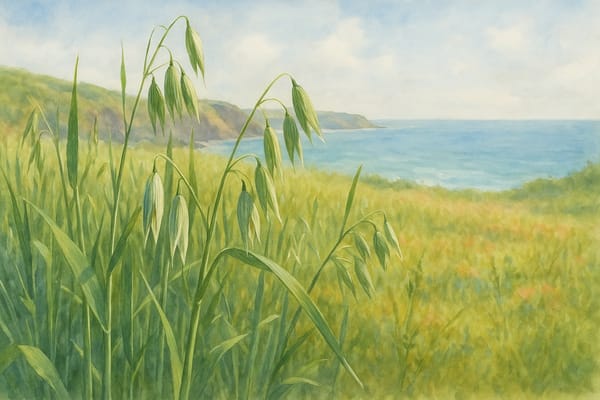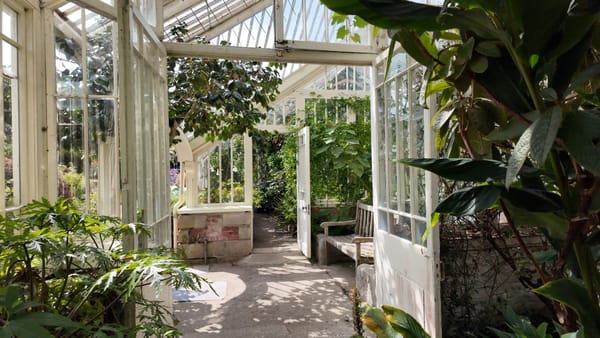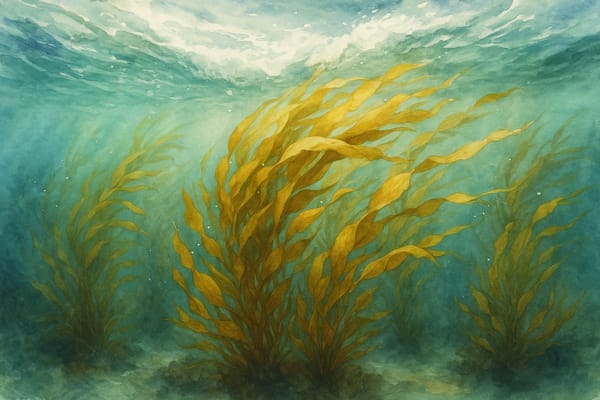Somewhere along a windswept field on Cornwall’s western edge, a small naked oat once swayed in the breeze—unassuming but quietly woven into the life of the land. Known as pillas, this unique grain was once a staple of rural Cornish kitchens and crofts, thriving in acidic soils where little else would grow. For generations, it fed people, animals, and even traditions. And then, like so many place-based foods shaped by centuries of hands-on knowledge, it slipped from view.
Today, pillas is being brought back to life. Not just as a grain, but as a story—a bridge between Cornwall’s farming past and its regenerative future.
What Is Pillas?
Pillas (also spelled pill-corn in historical records) is a variety of naked oat (Avena nuda), meaning it sheds its husk naturally during threshing. Unlike the more common oat species that require industrial processing to remove the inedible outer hull, pillas was easy to mill and well-suited to traditional Cornish farming. It grew readily in poor, stony soils, especially around Penwith, and was often sown at the end of a crop rotation, earning the name "farewell crop" among farmers.
In a landscape defined by marginal fields, wild weather, and low-fertility soil, pillas was the grain that refused to give up.
A Lost Grain of the Land
In Cornish homes, pillas found its place not just in the soil but on the table. The grain was most commonly used to make pillas-gerts, a nourishing porridge thickened with milk. Some versions called for the oats to be sprouted, dried, and lightly toasted before grinding—a practice that produced a sweet, almost nutty flavour. It was more than a meal; it was an early-morning ritual tied to the rhythm of rural life.
Farmers also valued pillas for animal feed, especially for fattening pigs and calves, and its fine straw was prized for rope-making and thatching.
By the 19th century, however, pillas began to vanish. As Cornwall’s smallholdings shrank and global grain markets brought in cheaper, high-yielding cereals, traditional landraces like pillas were quietly replaced. Modern agriculture demanded uniformity, scale, and ease. Pillas—with its low yield and local quirks—no longer had a place.
How a Grain is Rediscovered
For decades, pillas was thought extinct. Only scraps of information survived in agricultural records, seed banks, and stories passed down in fragments. Then came a resurgence of interest in Cornwall’s biocultural heritage, and researchers began searching for evidence of the lost oat.
Botanists found that pillas hadn’t disappeared entirely. Some samples survived in seed banks, although often mislabelled or confused with other naked oat varieties introduced from Asia. With careful genetic analysis, researchers were able to identify and isolate what appeared to be the authentic Cornish landrace.
Now, experimental plots are growing again. Gardeners, growers, and scientists are working together to test its resilience, reimagine its uses, and invite pillas back into the field—and the kitchen.
Pillas and the Soil: Resilience in a Changing Climate
One of the most compelling reasons to revive pillas isn’t nostalgia. It’s survival.
Pillas evolved to thrive in poor soils and harsh climates. It requires little in the way of fertiliser, tolerates acidity, and performs well in areas with low rainfall. In a time of climate extremes and rising fertiliser costs, this kind of low-input resilience is exactly what sustainable farming needs.
It also enhances soil health. Growing traditional grains in rotation with other crops or alongside native wildflowers helps improve soil structure, boost microbial activity, and encourage pollinator diversity. For small Cornish farms, reintroducing pillas could mean cultivating not just food, but a more biodiverse, self-sustaining landscape.
A Taste of Heritage: Culinary Rediscovery
Pillas-gerts is more than a quaint recipe—it’s a legacy of Cornish domestic life. Modern chefs and bakers are now experimenting with pillas as a heritage ingredient, working it into breads, puddings, and savoury dishes.
Its mild, sweet flavour and digestible properties make it a candidate for inclusion in gluten-sensitive diets or health-conscious recipes. And its backstory—resilient, local, lost and found—resonates with the growing appetite for food that tells a story.
There’s potential, too, for pillas to feature in regional food branding, just as spelt has in other parts of the UK. For Cornish producers, it could become a premium crop that carries both culinary and cultural weight.
A Symbol of Cornish Revival
The return of pillas is about more than a bowl of porridge. It reflects broader movements in Cornwall and beyond: the revival of the Cornish language, interest in local seeds and landraces, the restoration of hedgerows, and the reclaiming of rural identity.
Each handful of seed planted today is a quiet act of renewal—a way of saying that forgotten things still matter, and that biodiversity includes not just species, but traditions.
Community gardens, school projects, and cultural festivals could all use pillas as a way to teach not just about agriculture, but about heritage, ecology, and resilience.
The Challenges Ahead
Reviving a crop like pillas is not simple. Researchers still face challenges in:
- Authenticating seed lines, as centuries of hybridisation have muddied the genetic waters.
- Recovering traditional techniques, which were largely passed on orally.
- Scaling up production to meet market interest while maintaining authenticity and sustainability.
But these are not insurmountable barriers. With collaboration between growers, cultural organisations, scientists, and communities, pillas can be reintroduced thoughtfully—keeping its roots in Cornwall while offering its lessons more widely.
Planting a Future from the Past
What grows in a Cornish field tells a story. Not just of weather and geology, but of people, memory, and care. Pillas reminds us that biodiversity doesn’t only live in forests or seed banks, but also in recipes, rituals, and resilience.
By bringing it back, we do more than restore a grain. We reweave part of Cornwall’s agricultural tapestry, threading it with hope for a more diverse, climate-smart, and culturally rich future.











